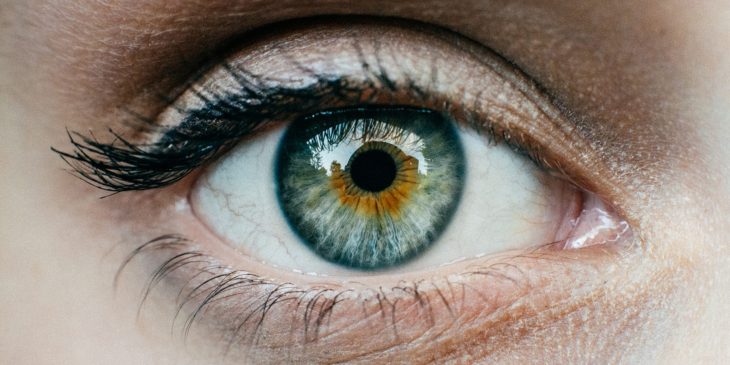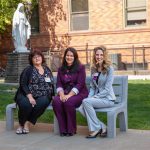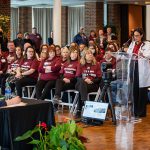UPMC has long been a leader in the field of transplant medicine. Patients come from all over the world to receive the world-class transplant care that UPMC offers — but it’s not all hearts, livers, and kidneys. Since the opening of UPMC Mercy Pavilion in 2023, specialists from the UPMC Vision Institute are averaging 200 corneal transplants each year, which is up 30% from their numbers in 2022.
The cornea is the vital protective layer of the eye, often likened to the “windshield” of the eye. As it’s the “first line of defense,” it’s prone to injuries and damage. Its specific shape plays a key role in how our eyesight works and filters some ultraviolet (UV) rays. When damaged, loss of vision can occur, and a partial or full transplant can be the necessary solution.
Dr. Vishal Jhanji, director, Cornea Services, UPMC Vision Institute, and Dr. Ken Nischal, director, CHP Ophthalmology, recently took some time to discuss the incredible cornea transplant services that their teams have been providing to patients from around the world, and the role the state-of-the-art Pavilion facilities play in their work:
What qualifies someone for a cornea transplant?
The most common cause or indication of a transplant need is Corneal Dystrophy. There are other indications, such as corneal trauma, corneal infection — which usually necessitate a full thickness transplant. The indications are very different in children compared to adults and usually include developmental anomalies of the eye.
How is it determined that a person requires a transplant?
Patients can be referred to us internally, from our own clinicians who are not cornea specialists, or from external providers. Since the COVID-19 pandemic, we have also used telemedicine more often for the preoperative counseling of patients.
Initial visits and conversations are always very detailed; we inquire about their ocular history, any systemic history or medications, and social history — which are all very important. We want to know how far away they live, if they will be able to use the aftercare eye drops. If they live on their own, we need to know if they will be able to attend follow-up visits. If not, we need to find someone closer to their home to take care of them post-transplant.
We always tell our patients that this is this is a big step, with a huge obligation. They’re receiving donated human tissue, and we need to give that respect. That means making sure we do our job well and that the patient is going to be able to take care of the tissue. All transplant patients and their families understand the need for lifelong follow-up in the eye clinic.
After determining that the patient is an ideal candidate for a transplant, the surgical scheduling team will coordinate with the eye bank. This is a critical component because we must ensure that corneal tissue is available on the ideal transplantation day. UPMC patients have access to the CORE Eye Bank, our local bank, as well as others throughout the country.
Is there any matching system involved for cornea transplant?
No, that’s a great thing with cornea tissue. Unlike most other solid organ transplantation, there is no matching required before corneal transplantation. This is partly attributed to the fact that cornea is an avascular structure — it does not have blood vessels. The eye banks perform essential blood and serological tests to make sure there’s no infection from the donor, but there’s no matching process involved.
What does the transplantation process look like?
Surgery day is stressful for the patient, so we take time to talk with them beforehand and go over the details of the procedure. As the patient’s support system, we also talk with the family about the postoperative care and keep them calm.
In children, the parent’s and child’s anxiety can be enormous. At Children’s we have child specialists who help calm the child’s nerves and also help parents at the same time.
We tell them “Yes, it’s a big procedure, but you’re in the right place.”
The surgery itself usually takes about an hour or two, depending on whether the procedure is a partial or full thickness transplant, and depending on the complexity of the disease. We keep the patients in recovery for another couple of hours postoperatively.
After surgery, the patients are required to come back for follow-up visits on day one, week one, and month one following the transplantation. Subsequent follow-up visits are less intense and are usually tailored according to the recovery. Pediatric patients sometimes need regular examinations under anesthesia during their follow-up visits.
A common question from patients is whether or not there’s a need for immunosuppressive medications. Unlike many other organ transplant procedures, patients are only required to use immunosuppressive medications in the form of eye drops after surgery. There is rarely a need for oral immunosuppression after corneal transplantation.
For example, for children who are undergoing a second graft, immunosuppression is a consideration.
How many patients are you seeing a year, and how many cornea transplants are you performing?
Every year, we perform about 200 transplants in adult patients and about 30 transplants in children. That’s a fairly large number for one center, and it’s about 30% more transplants than we were performing before the Pavilion opened.
We have six adult cornea surgeons at the Vision Institute and two pediatric cornea surgeons at Children’s. At the Institute, between the six surgeons, we see about 10,000 patients a year.
What is the difference between partial and full thickness?
The cornea has five layers. A full thickness transplant is when all five layers are involved or diseased, so we need to transplant all five layers. A partial-thickness corneal transplantation requires replacing some of the corneal layers on the front or back of the cornea. A partial-thickness transplant requires less sutures and is associated with quick recovery.
We replace only the diseased tissue, and we leave the rest. A “customized corneal transplant.”
Dr. Jhanji, what has changed the most for you and your team since the Pavilion opening?
The Pavilion gives us more opportunities to take care of our patients in an expanded space and with significantly advanced facilities. We have a lot more clinic space and staff to accommodate more patients.
In addition to that, the state-of-the-art facilities, especially imaging facilities, help us provide a better preoperative and postoperative evaluation of the patients who need a corneal transplant.
The second biggest advantage is the availability of operating space inside the Pavilion. It is extremely useful and convenient for us and our patients to have the clinic and the operating rooms in the same building.
We have access to a lot of new, advanced devices, such as instrumented microscopes — microscopes which are integrated with 3D imaging.
We couldn’t be happier to be in the Pavilion.









